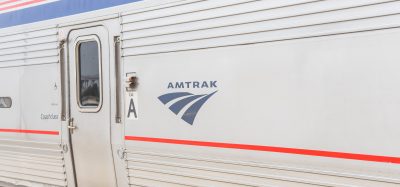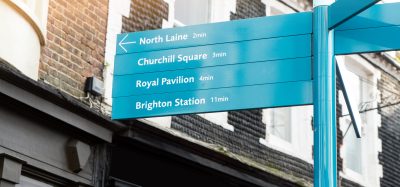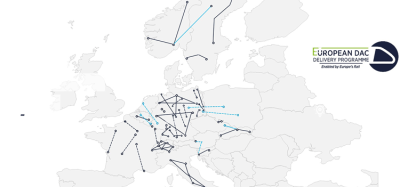Dealing with increased data demand from operators and passengers
Posted: 16 November 2021 | Jeremy Haskey, Nomad Digital | No comments yet
Jeremy Haskey, Chief Architect at Nomad Digital, shares his insight into rail fleet connectivity technologies and the benefits they can bring to both operators, and the passenger experience.


Would you agree that the ‘gigabit train’ is fast becoming reality, and why?
I agree the data demand for connectivity is pushing us rapidly towards the gigabit train. Do I think this is a reality today? Not really. Whilst 5G does bring us an increase in data throughput, we are not yet able to say the mobile networks can provide us with more than a few hundred Mbps to a train and this is the absolute best of cases.
Passenger demand for data and connectivity is still on an exponential growth path, combine this with operational requirements, such as offloading high-definition CCTV images and track measuring equipment fitted to some fleets. These all gather huge amounts of data meaning the requirement for the gigabit train is already here. A recent example showed that having to offload just over 2TB of data from a train is measured in days using the cellular services.
What would you say are the core benefits of trackside connectivity networks for fleet operators?
As the amount of data demanded by passengers increases, there’s also the trade-off between increasing cellular costs and the cost of installing and maintaining a private network.
The key benefits of a Private Trackside Radio Network are providing consistency of coverage and throughput, as well as the reliability of high-speed data throughput which, over time, will present a cost saving to the operator. When a priority KPI for a fleet operator is passenger experience, connectivity through Mobile Operators becomes a challenge, you have areas of no coverage and times of the day when data throughput is affected by network congestion. In these situations, a Trackside radio network really comes into its own.
As the amount of data demanded by passengers increases, there’s also the trade-off between increasing cellular costs and the cost of installing and maintaining a private network. I think that equation should be in the back of any operator’s mind now.
What lessons have you learned from applying your trackside connectivity solutions in the UK and North America?
We are always learning, and our most recent Trackside Telecoms projects are benefiting from lessons learned from previous deployments. This has honed our skills as regards to making these networks quick and cost effective to deploy, whilst allowing us to ensure easy access to the active components for maintenance activities. In our recent deployments, trackside radios are hung from OLE gantries, we have become adept, working with the electrification and structural engineers to place trackside radios in the safe zone on these structures, whilst not compromising the safety of the system or the RF characteristics of the links.
Nomad Digital has also benefited from the involvement of Alstom, Nomad Digital’s parent company, who bring the complete skill set and knowledge to safely install technology at the trackside in even the most complex of rail environments. This really completes Nomad Digital’s Train to Ground Trackside portfolio of solutions, providing a single, comprehensive choice for a dedicated trackside radio network.
To what extent do you think rail passengers now expect on-board Wi-Fi to be the norm during their journey, and do you think passengers would choose a particular operator based on their on-board connectivity offering?
The more we can start to offer business style services through consistent and high throughput connectivity, the more I see the passenger decision being influenced by the availability of a broadband style Wi-Fi service.
It’s an interesting question, some of our customers have explained that Wi-Fi on-board does drive passengers’ decision making for selecting operators to travel with. The more we can start to offer business style services through consistent and high throughput connectivity, the more I see the passenger decision being influenced by the availability of a broadband style Wi-Fi service.
One thing to bear in mind is the intermodal choice: it becomes easier to choose the green option – to travel by train – if one can get work done and stay connected.
Do trackside and on-board connectivity solutions suffer from disruption when trains travel through tunnels or in remote areas?
Today if we use cellular connectivity, we tend to lose connectivity in tunnels, deep cuttings, and some rural areas, reflecting the priorities of Mobile Network Operators. Where Nomad Digital has deployed Train to Ground Trackside Telecoms solutions that cover tunnels, cuttings, and rural areas, the solution ensures the train suffers no degradation in performance or loss of connectivity.
How scalable and flexible are Nomad Digital’s connectivity solutions?
Nomad Digital has made this a key focus for 2021/2022; we now have a solution range that supports 5G from the entry level LTE-A and 5G router all the way to the chassis-based router designed to host large data applications on the train. This ensures that Nomad Digital’s solutions offer the best available connectivity across the range of users covering buses, trams, regional and high-speed trains.
Nomad Digital dedicates a significant amount of R&D into building a user platform which enables a user to mould data applications onto, including the latest HD CCTV management and storage, as well as the emerging work being done with track asset monitoring.


Related topics
Big Data, Digitalisation, Passenger Experience/Satisfaction, Technology & Software, Wi-Fi








